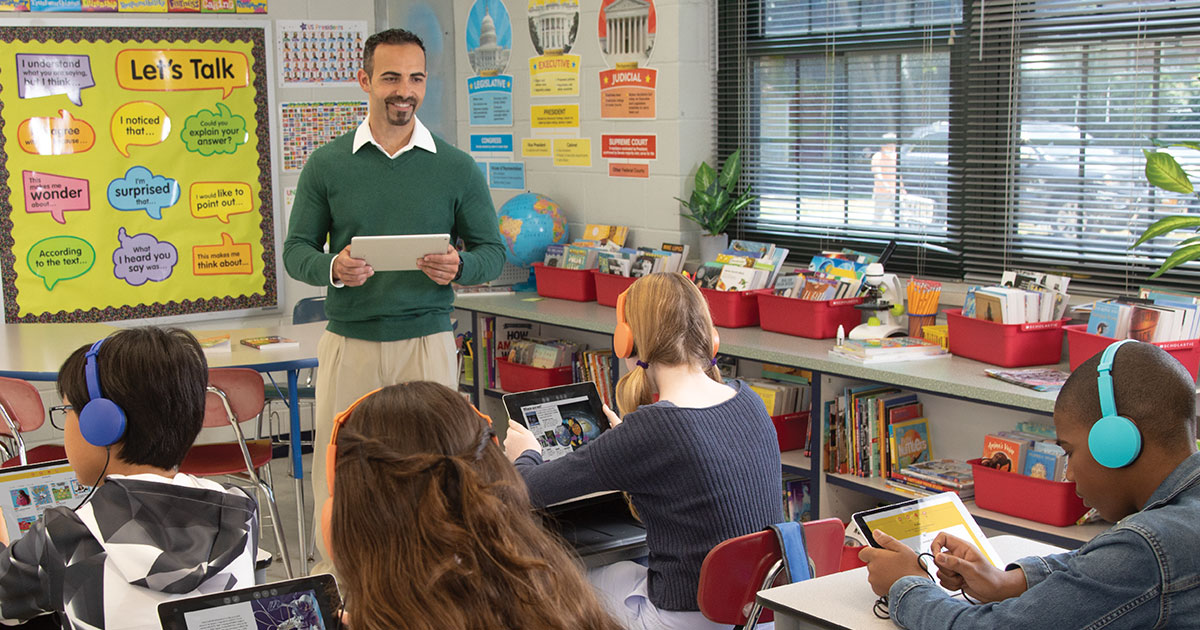If you're familiar with the Science of Reading, you've likely come across Scarborough's Reading Rope.
It's one of the most popular infographics in education — and for good reason.
The rope elegantly breaks down the complex process of learning to read into two strands: language comprehension and word recognition.
With major investments into new phonics programs and initiatives, schools are well-equipped to address the word recognition strand.
But what about language comprehension?
Today I'd like to show you 5 ways you can develop the comprehension side of the Science of Reading equation using a tool you probably have in your classroom right now — ebooks!
1. Select Books by Skill (Not Topic)
When it comes to the Language Structures strand, direct instruction in grammar and word choice is vital. But for those concepts to stick, students need to see them in action.
With ebook platforms like Literacy Pro, you can quickly find books that provide high-quality examples of the skill you're teaching in context.
From figurative language to sequencing, just type the skill you're looking for into the search bar.
For instance, search Literacy Pro for plural forms, and you'll instantly have a dozen titles to embed in your lessons. Find teaching materials within the program or align the titles to your existing curricula.
2. Build Background Knowledge at Home
Building background knowledge is essential to skilled reading. But teaching it during the literacy block can take away valuable time from explicit, individualized instruction.
Ebooks provide a powerful way to build content knowledge outside of the classroom because they can be used at home with minimal teacher involvement.
Try starting a nonfiction ebook in class (Literacy Pro has thousands) and have your students finish it at home. This also encourages family involvement as Literacy Pro ebooks can be accessed on any device with internet connection.
By leveraging ebooks to build background knowledge, you can maximize instructional time and build the home-school connection—at the same time!
3. Keep It Fresh
Here at Literacy Pro, we're always growing and updating our ebook collection to ensure you have the latest and greatest tiles for instructional reading.
That's especially important for teaching literacy knowledge. By using ebooks, you can introduce new genres and text structures with titles that are relevant to your students' lives.
Best of all, every student can read the same title at the same time, making structured independent reading even more effective for building knowledge across the board.
4. Boost Vocabulary Knowledge With Word Study Activities
Most ebook libraries have a built-in dictionary so students can quickly learn the meaning of words they don't know.
But according to the Science of Reading, vocabulary knowledge takes more than memorizing definitions.
That's why Literacy Pro offers a Word Study activity with hundreds of our ebooks. As part of our Teacher Tip cards, these activities help students understand how words work. Here's an example from Hi, Fly Guy:
Words With Suffix -est
Read the word smartest on page 9. Remind children that the suffix -est means
“most” and that smartest means “most smart.”
Have children use the suffix -est to tell the meanings and explain the comparisons of these words: tallest (page 28), cutest(page 28), and heaviest (page 29)
5. Use Reading Data to Inform Instruction
When it comes to the Science of Reading, you’ll need to be something of a scientist yourself.
To find out what’s working in your classroom, you’ll want to test different instructional strategies, collect data, and adjust lessons accordingly.
Ebook programs like Literacy Pro can help by providing you with a wealth of data on students’ comprehension of texts.
You can use these data points to inform instruction and check in with students, while your administrators can use them to ensure they’re supporting your practice.
Ready to Enhance Your Science of Reading Instruction?
Get in touch and we’ll set you up with a demo of Scholastic Literacy Pro. We'd love to show you how our ebook library and management platform can support your Science of Reading Instruction.
The Reading Rope. Adapted from Scarborough, H. S. (2001). Connecting early language and literacy to later reading (dis)abilities: Evidence, theory, and practice. In S. Neuman & D. Dickinson (Eds.), Handbook for research in early literacy (pp. 97–110). New York, NY: Guilford Press.
